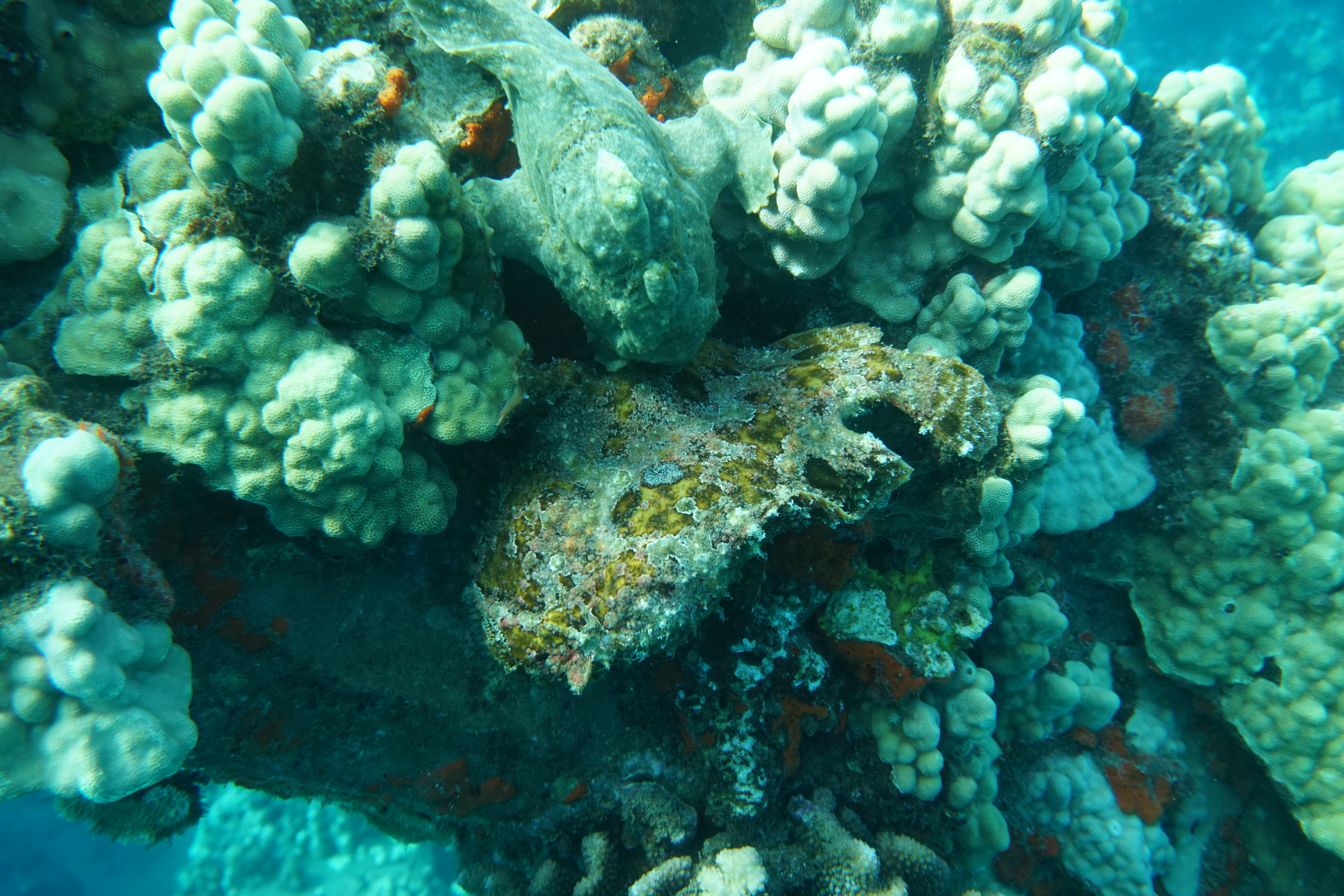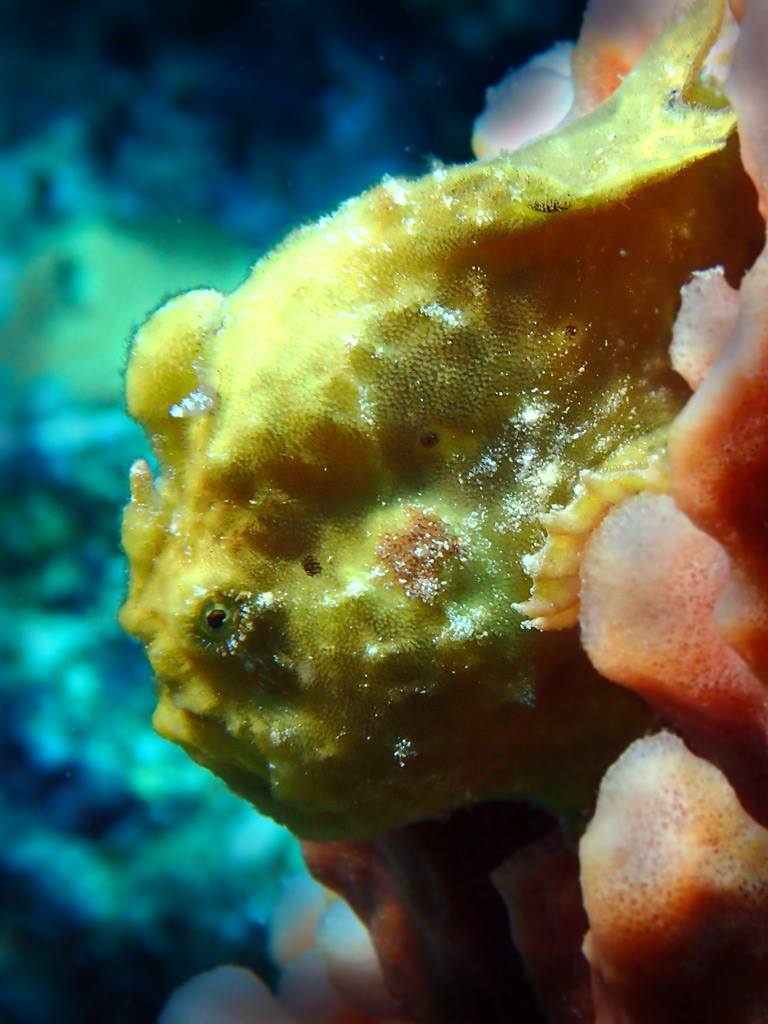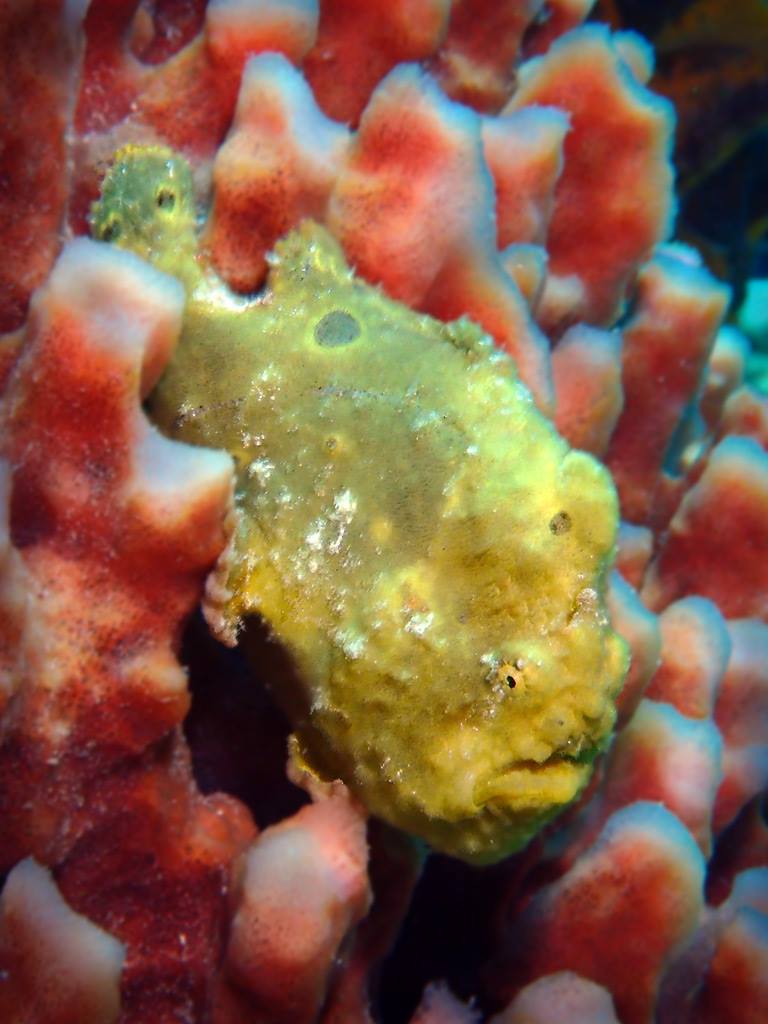Maluku Diving
Registered
Underwater photographers seem to have the never-ending the debate as to which fish they photographed was their favorite. But all divers know for sure that the famous frogfish has a special place in their hearts. Discovered in Ambon nine years ago, the frogfish (a type of anglerfish) are truly the masters of camouflage in the underwater realm.

About the frogfish
There are 40+ species of frogfish that can only be seen rarely with only a few photos of them that exists. What really intrigues divers and underwater photographers is the striking patterns on its body. Each individual frogfish can be told apart by the distinguished patterns and colors on their face.

These creatures are ambush predators that are often found on reefs, sandy bottoms, or on sponges and corals. Because of Ambon, Maluku is a popular place for muck diving, the frogfish can also be found in the debris, seagrass, and mangrove roots. An interesting fact about their behavior is that the frogfish employs “aggressive mimicry” in order to attract prey. While this captivating critter awaits their next victim, it is the perfect time for you to snap a picture.

Tips for shooting underwater photography the frogfish
1. Choosing your lens: Ambon, Maluku is an iconic dive site for muck diving located in Indonesia. A standard choice of lens to capture the frogfish are 60mm, 100mm, or 105mm as these creatures are not particularly shy and can shoot them from up close. To achieve super macro images, you can use diopters or extension tubes to shoot the smaller juvenile frogfish or extreme close-ups of the beautiful patterns on the frogfish’s face.
However, if you’ve got a large frogfish on your hands, a wide-angle fisheye lens like the 10.5mm, 15mm, 10-17mm can be used. This lens creates a unique perspective of the frogfish.

2. Depth-of-Field: As with all fish subjects, remember to focus on the eye of the frogfish. Try using a low f-stop to produce depth in a portrait of the frogfish and a soft, natural filter. The low f-stop can also be useful in shooting a darker colored frogfish to differentiate their eye and skin details.
To get gorgeous close-up abstracts, using a higher f-stop is an excellent option. When you’re observing the frogfish while it’s feeding or yawning, for example, the higher f-stop can produce spectacular results. Take note to move back and forth to allow the frogfish to ‘behave’ in its natural environment. Don’t forget to use a fast shutter speed to capture all the exciting few split-seconds.

Source: Maluku Diver Resort Blogs - Indonesia
About the frogfish
There are 40+ species of frogfish that can only be seen rarely with only a few photos of them that exists. What really intrigues divers and underwater photographers is the striking patterns on its body. Each individual frogfish can be told apart by the distinguished patterns and colors on their face.
These creatures are ambush predators that are often found on reefs, sandy bottoms, or on sponges and corals. Because of Ambon, Maluku is a popular place for muck diving, the frogfish can also be found in the debris, seagrass, and mangrove roots. An interesting fact about their behavior is that the frogfish employs “aggressive mimicry” in order to attract prey. While this captivating critter awaits their next victim, it is the perfect time for you to snap a picture.
Tips for shooting underwater photography the frogfish
1. Choosing your lens: Ambon, Maluku is an iconic dive site for muck diving located in Indonesia. A standard choice of lens to capture the frogfish are 60mm, 100mm, or 105mm as these creatures are not particularly shy and can shoot them from up close. To achieve super macro images, you can use diopters or extension tubes to shoot the smaller juvenile frogfish or extreme close-ups of the beautiful patterns on the frogfish’s face.
However, if you’ve got a large frogfish on your hands, a wide-angle fisheye lens like the 10.5mm, 15mm, 10-17mm can be used. This lens creates a unique perspective of the frogfish.
2. Depth-of-Field: As with all fish subjects, remember to focus on the eye of the frogfish. Try using a low f-stop to produce depth in a portrait of the frogfish and a soft, natural filter. The low f-stop can also be useful in shooting a darker colored frogfish to differentiate their eye and skin details.
To get gorgeous close-up abstracts, using a higher f-stop is an excellent option. When you’re observing the frogfish while it’s feeding or yawning, for example, the higher f-stop can produce spectacular results. Take note to move back and forth to allow the frogfish to ‘behave’ in its natural environment. Don’t forget to use a fast shutter speed to capture all the exciting few split-seconds.
Source: Maluku Diver Resort Blogs - Indonesia







